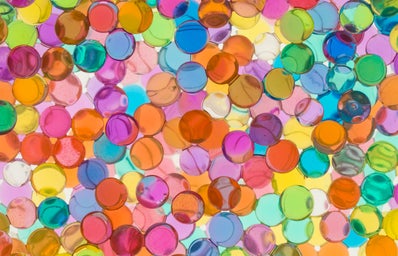Paint is generally a cheap option when in need of giving walls a makeover. If you are in the lucky position where you have permission to paint the walls (or even just one wall) in your room, there are hundreds of shades to choose from, not to mention magnitudes of color combinations and several cool effects such as shimmer or 3D texture. Painting a wall is quite easy, too. The Scandinavian minimalist ideal of white or whiteish walls is stepping aside and all the fashionable homes in interior design magazines feature at least one bold accent wall – but often several darker colored walls in harmonious hues. While a darker wall will give off a different sense of the size of the room, even a new coating in a lighter shade can bring out a new atmosphere. Every color you deem appropriate for your room has its own coziness factor and has the potential of making the room really feel more like yours – rather than just a room containing items you own.
It was my partner’s idea to do a mural. It took a bit for me to be convinced – while I consider myself artistic enough, I like to stick with pencils and an A4. Plus, what if we botched the whole thing and had ended up wasting both money and effort on something that had completely ruined our living room wall? I knew our living room was just the kind to need a makeover. Almost all the furniture is old, inherited, yet usable, so instead of buying a new sofa to replace a perfectly good one, it was the walls that needed changing. How does one plan a mural? We spent ages looking up inspiration – landscapes, abstract patterns, pictures from or inspired by movies or games we liked… However, anything more complicated requires many more colors, which inevitably raises the budget, as even 0.5 l of paint can cost 10 €. In case of complicated pictures, it may in fact be better to look into photo wall papers. In our case, we settled on doing a silhouette landscape – a simple palette with only a few colors and low on details so as to actually be realistic with our skills. From there, the work progresses as follows:
Sketch ideas. What can be done with the chosen technique – for example, is it possible to paint the silhouette of a waterfall? What should be the proportion or distance between the far-away silhouette of a mountain range and the near-distance silhouette of a tree? Do we have the know-how to paint a pagoda and have it look good? Should we get a stencil? Can we use the same color both for the clouds and the snowy peaks or do we need to buy one color more?
Draw a model. What elements from your sketch do you want to place where? Where should they be placed on the wall you are planning on using – for example, don’t place an interesting detail in a space you know will be blocked by a bookcase or a light switch. Measure and mark everything on a paper or a computer image that represents the size of your wall.
Optional: Make a grid. Unless you are very comfortable in your painting skills or want to work without a model to guide you, the grid method is recommended. In this method, you draw a square-grid over the picture you want to paint, a matching grid but of an enlarged size on your wall, and use these to copy the image onto the wall.
Buy the paints. What kind of paint do you need? We went with normal interior household paint, but sometimes you may want to use higher quality art paints. How many square meters do you need to paint of each color? Paint buckets usually say how many square meters a liter of paint covers. Remember to also take into account your coats of paint – two coats are enough if the old color is pale, but for being extra sure or for covering darker surfaces, a third may be needed – sometimes it even makes sense to prime everything with white paint so as to give you a clean canvas where no old colors or patterns shine through.
Buy the tools. The only tools you really need is a paint brush (for details), a roller and a tray (for large areas), and painter’s tape and floor protection (to avoid making messes). You can use brushes for details and small areas, but for larger areas, a roller is the way to go. If you go for several large areas of different colors, it may also make sense to get separate rollers for every color, as washing the rollers from the old color takes time and effort. If you do a mural with straight lines, painter’s tape can be used for this, too. You may also want to buy a painter’s detergent for washing both your tools and for cleaning the painting surface before painting (if you suspect it is dirty or you want an extra fine finish).
We did the pagoda with a stencil, but the bridge using painter’s tape and a steady hand. For the sky, the line between white and blue was blurred using a dry brush.
Fix the painting surface. Remove any old wallpaper and fill in any screw holes for a smooth finish. It is also possible to paint on top of a wall paper, but in that case you may still want to check that the surface is even and bear in mind that any texture of the wall paper, including the lines between sheets, may be visible in the final result (as in the photo above).
Protect the environment. At this point it is time to remove the furniture out of the way (get a friend to help you carry all the stuff). Use protective plastic or paper sheets, available at hardware and home renovation stores, to cover floors and anything left behind (e.g. bulky furniture that is too heavy or too big to be moved elsewhere). To avoid stains on light switches and sockets, unscrew the cover plates around the switch/socket and tape a piece of paper to cover the switch/socket. This is safe to do even with electricity connected, as the screw driver will be touching only the screw keeping the cover in place, but do ask someone to help or check our instructions if you feel unsure about working close to live circuits.
Paint. This is the most straight forward but arguably the hardest part in terms of time and effort. Allow for 1–2 hours of waiting time before painting the next coat – in the meantime you can work on another wall. Keep the room ventilated to keep the fumes out. The more details you have, the more time consuming the ordeal will be. Get an audiobook to keep you company. It is not necessary to finish everything in one day, but it is also not advisable to leave your utensils to dry over the night without rinsing and cleaning them first – dried paint is much more challenging to get rid of. If you are mixing paints, you will want to mix enough of your shade and paint all areas in that shade in one go, as it is very difficult to achieve the same shade again.
Clean up. Once the paint has dried, you can remove the tapes and the protective sheets. Be prepared to go over the walls one more time in case you spot any holes in the paint, any unwanted splotches or blurs, or notice any unpainted strips of wall when you remove the tape. Once the last corrections have dried sufficiently, you can officially call the mural done. Wash your tools, bring in your furniture and sit back and admire.
Looking back at the experience, I think a nice wall paper could also have achieved the needed makeover but having something completely unique to cover your wall gives off a special sense of accomplishment.



